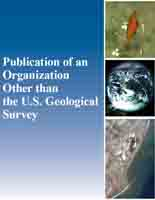Global cycling and climate effects of aeolian dust controlled by biological soil crusts
Links
- More information: Publisher Index Page (via DOI)
- Open Access Version: Publisher Index Page
- Download citation as: RIS | Dublin Core
Abstract
Biological soil crusts (biocrusts) cover ~12% of the global land surface. They are formed by an intimate association between soil particles, photoautotrophic and heterotrophic organisms, and they effectively stabilize the soil surface of drylands. Quantitative information on the impact of biocrusts on the global cycling and climate effects of aeolian dust, however, is not available. Here, we combine the currently limited experimental data with a global climate model to investigate the effects of biocrusts on regional and global dust cycling under current and future conditions. We estimate that biocrusts reduce the global atmospheric dust emissions by ~60%, preventing the release of ~0.7 Pg dust per year. Until 2070, biocrust coverage is expected to be severely reduced by climate change and land-use intensification. The biocrust loss will cause an increased dust burden, leading to a reduction of the global radiation budget of around 0.12 to 0.22 W m−2, corresponding to about 50% of the total direct forcing of anthropogenic aerosols. This biocrust control on dust cycling and its climate impacts have important implications for human health, biogeochemical cycling and the functioning of the ecosystems, and thus should be considered in the modelling, mitigation and management of global change.
| Publication type | Article |
|---|---|
| Publication Subtype | Journal Article |
| Title | Global cycling and climate effects of aeolian dust controlled by biological soil crusts |
| Series title | Nature Geoscience |
| DOI | 10.1038/s41561-022-00942-1 |
| Volume | 15 |
| Publication Date | May 16, 2022 |
| Year Published | 2022 |
| Language | English |
| Publisher | Springer Nature |
| Contributing office(s) | Southwest Biological Science Center |
| Description | 5 p. |
| First page | 458 |
| Last page | 463 |


